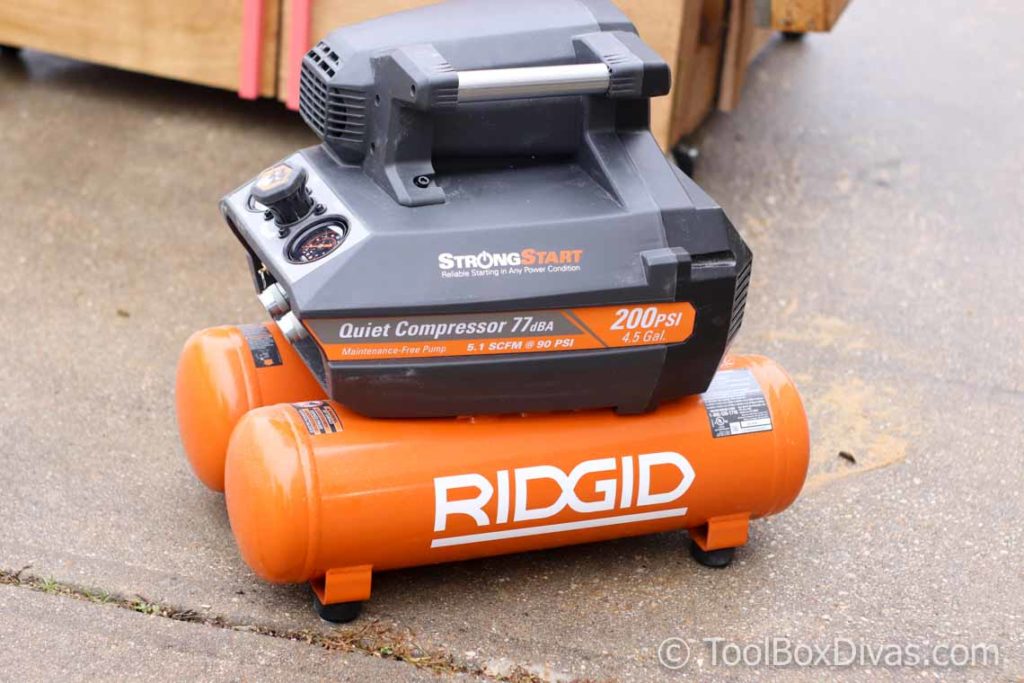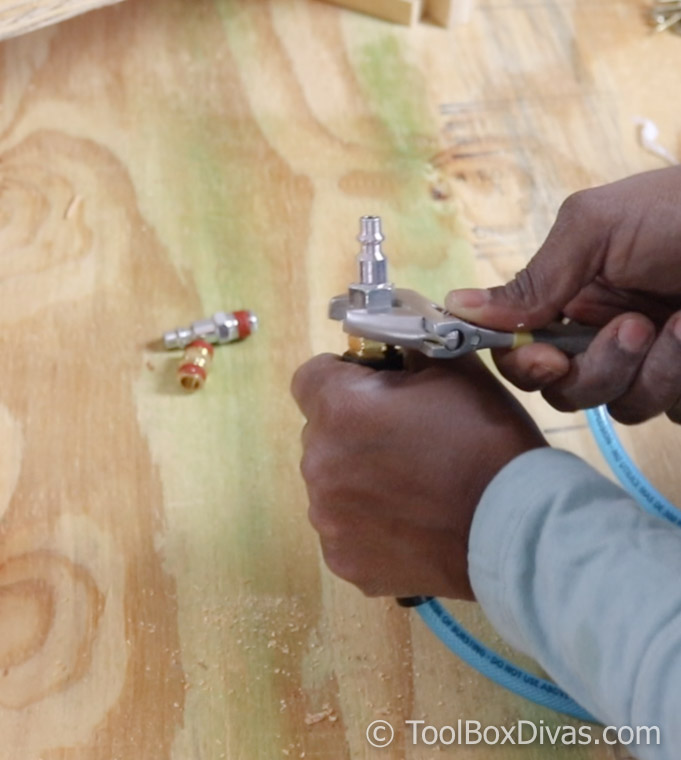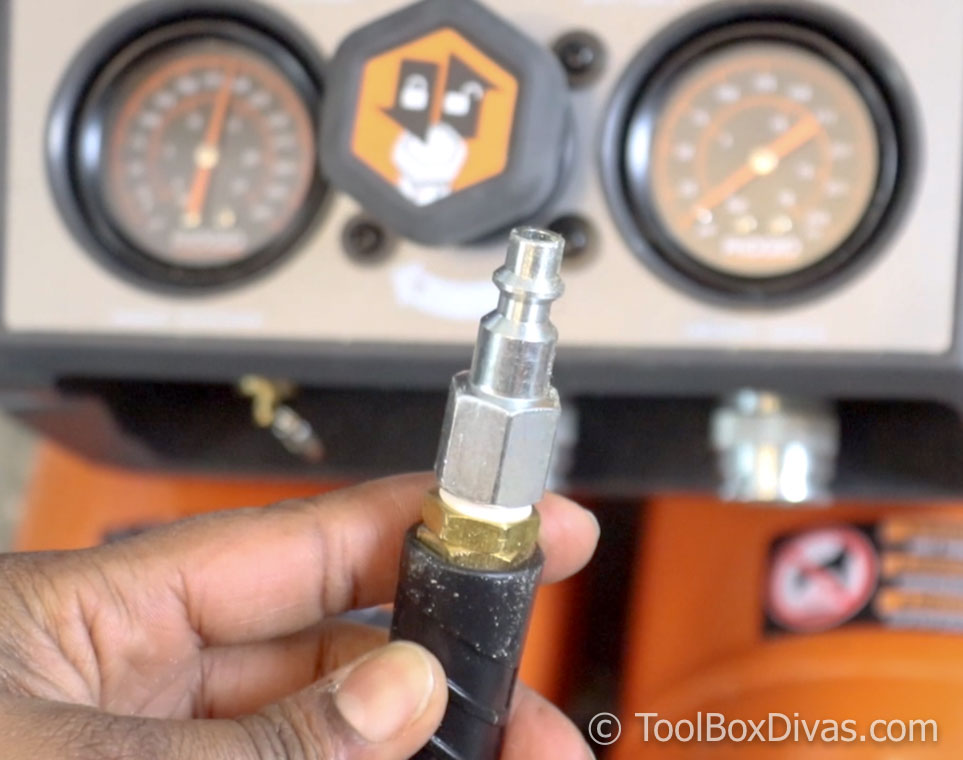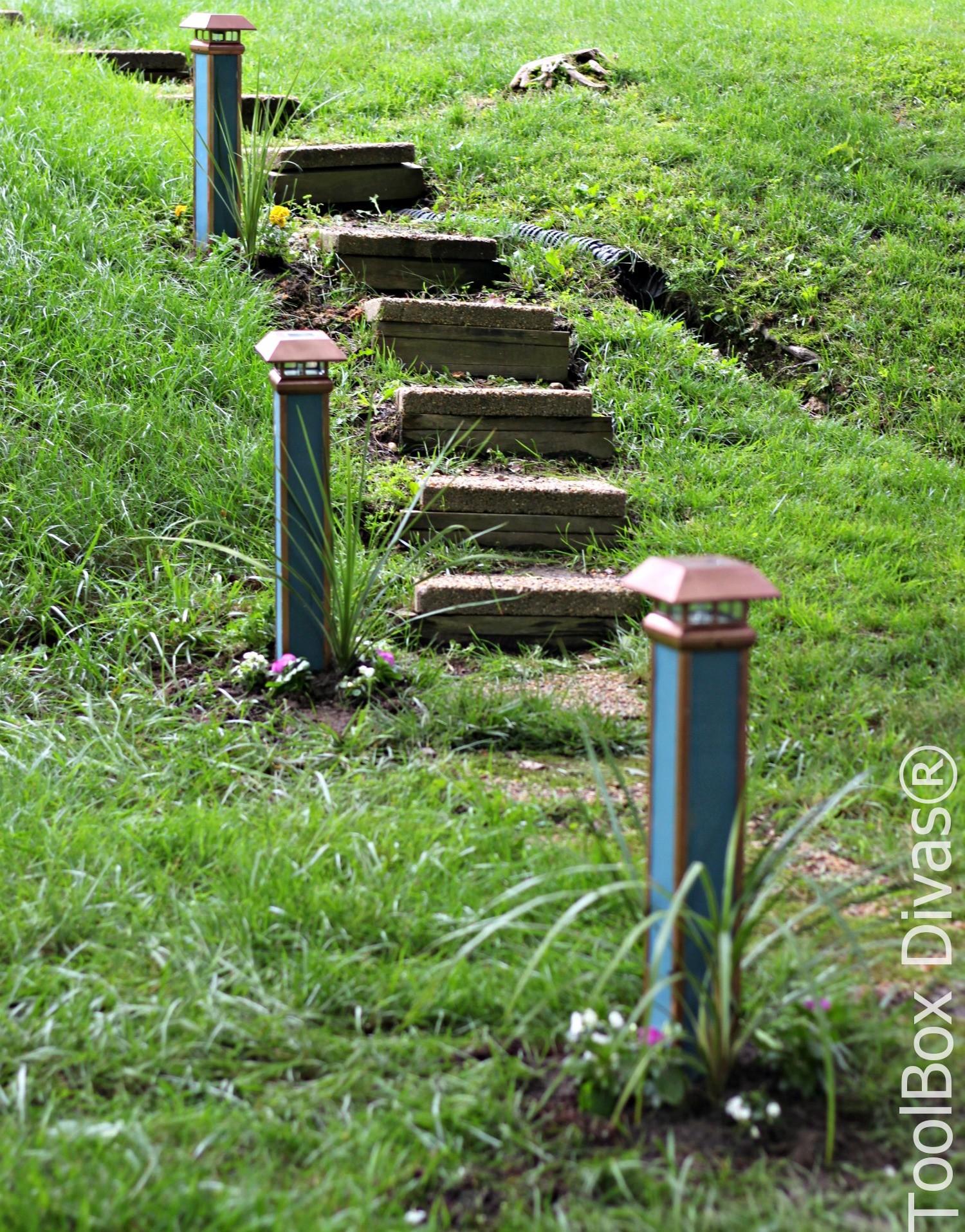Tools 101: How to Setup and Use An Air Compressor and Finish Nail Gun
An air compressor is a power tool that generates pressurized air. The power of this pressurized air is then used to power a whole host of tools. In this post I’m going to show you how to setup and use a portable air compressor and pneumatic nail gun.
*This post is sponsored by The Home Depot and contains affiliate links and I will be compensated if you make a purchase after clicking on my links.
An air compressor can be used in a ton of applications such as inflating tires, powering paint sprayers, and other pneumatic tools like sanders and nail guns. When I first started this “DIY life” I researched nail guns. At the time I found the price of a nail gun was pneumatic nail gun, one that is powered by an air compressor, was way more affordable than a battery operated nail gun. So I purchased a compressor along with a nail gun. This is what I wish I’d known when everything arrived.
For this tutorial, we are going to using the RIDGID 4.5 Gal. Portable Electric Quiet Air Compressor paired with the RIDGID 15-Gauge 2-1/2 in. Angled Finish Nailer. While the features of the tools may differ slightly based upon the brand, the principal of how to set up and use a compressor is the same.
The Air Compressor
RIDGID 4.5 Gal. Portable Electric Quiet Air Compressor is corded and comes equipped with 200 PSI (Pounds Per Square Inch). PSI is the measurement of the pressure exerted by the force of the air. It can be used with a tool that requires up to 150 PSI. I really like this compressor because compared to similar models this compressor is not as noisy at 77dBA. It has StrongStart technology for reliable starting on any job site and best of all, it’s backed by RIDGID’s 3-year warranty.

The Nail Gun
RIDGID 15-Gauge 2-1/2 in. Angled Finish Nailer comes with a finish nailer, 3 no-mar pads, and contractor bag. It has CleanDrive Technology which offers 17x more consecutive perfect drives. And backed by RIDGID’s warranty it comes with free parts and service for life with the registration of your nail gun.

Here’s what You’ll Need to get started
- Safety Goggles
- Husky 1/4 in. x 50 ft. Polyurethane Air Hose
- Husky 4-Piece Quick Connect Kit
- PTFE Tape or Teflon Tape
Setting up the Compressor
To connect the air compressor to a tool you’ll need to attach a hose and the connectors. So essentially you’ll need a 1/4 in. NPT female coupler, a 1/4 in. or an NPT male coupling and a 1/4 in. NPT male plug or a 1/4 in. NPT female plug, a hose and PTFE tape. Luckily you can find most of the connection pieces you’d need to get started in the Husky 4-Piece Quick Connect Kit.

Step 1.
Start by adding Teflon tape to one end of the hose. Be careful not to add too much. Too much tape can prevent the air from flowing from the compressor to the tool or vice versa.

And screw in place the Universal Coupler.

Tighten with a wrench. 2 Wrenches might make it easier to grip and tighten the connectors. 
Step 2.
Apply Teflon tape to the other end of the hose and screw on the 1/4 in. NPT IM Brass Female Plug (NPT stands for National Pipe Thread).

Tighten with a wrench. Rememeber 2 Wrenches might make it easier to grip and tighten the connectors.

Step 3.
Plug in the compressor and turn it on. The RIDGID 4.5 Gal. Portable Electric Quiet Air Compressor will automatically start to pressurize.

You will see the Take pressure gauge to the left move up and it will automatically stop once it hits a PSI of 200. (Please Note: if the tank pressure is does not increase the Drain valve at the bottom of the tank maybe open.) Notice the Outlet pressure gauge should be at 0 PSI. The outlet pressure gauge shows how much pressure is being sent through the hose to the tool. You want outlet gauge to be at zero before attaching the tool. It will make attaching the tool easier.

Step 4.
Attach the female plug into the universal coupler on the front of the compressor.

To attach push the coupler up and insert the female plug. 
Do the same at the opposite end of the hose connecting it to the pneumatic tool. We are connecting it to the RIDGID 15-Gauge 2-1/2 in. Angled Finish Nailer.

Once it’s all attached pull the Pressure Regulator Knob out and turn it clockwise to increase the outlet PSI. Note you want to that the outlet PSI should be set to the recommended PSI noted for the tool.


This information can be found in the manual for the pneumatic tool you are connecting. In this case, we are connecting the RIDGID 15-Gauge 2-1/2 in. Angled Finish Nailer which has an operating pressure of 70-120 psi.

Step 5. Using the Nail Gun
You can adjust the depth in which the nail is driven into the material by turning the depth adjustment knob.

With the RIDGID 15-Gauge 2-1/2 in. Angled Finish Nailer you can select the actuation mode, Single sequential actuation (which is the most accurate nail placement mode) and Contact actuation (allows very fast repetitive nail placement).

Just remember to place the nose of the tool pointed away from you, feed a strip of nails into the magazine with the nails pointed downward and at the angle like the angle of the magazine. If the nails are placed in the nail gun at the wrong angle it will misfire and jam. 
Once you’re done using the tool disconnect the hose.
Step 6. Powering Down and Depressuring the Compressor.
Turn the compressor off and unplug the compressor. Disconnect the hose.

Pull the ring on the pressure relief valve to release air from the tank until tank pressure gauge reads less than 20 psi.



Once the tank pressure gauge reads 20 PSI or lower, you can safely tilt the compressor to drain moisture from the tanks.

I hope this helps you get started setting up your air compressor and using a pneumatic finish nailer. Stay tuned I’m going to show you how I store my RIDGID 4.5 Gal. Portable Electric Quiet Air Compressor. This compressor is portable, it is a bit heavy for me to pick up and move about my workshop. I’ve outfitted my new Miter Saw cart to store my compressor. I can now move the cart and run the hose from it without having to pick it up.

Check out how I made this Mitercart by disassembling my old cart and using the boards to create a larger cart that now suits my workshop and needs.

I acknowledge that The Home Depot is partnering with me to participate in the ProSpective 2018 Campaign. As a part of the Program, I am receiving compensation in the form of products and services, for the purpose of promoting The Home Depot. All expressed opinions and experiences are my own words. My post complies with the Word Of Mouth Marketing Association (WOMMA) Ethics Code and applicable Federal Trade Commission guidelines.
For more tool tutorials and home maintenance projects check out these posts:








In this article, you share more information, resources, and images.
Just awesome.
Can you share with us how many types of Framing Nailers out of market right now?
Keep it up.
Thank you! I can definitely do that in a future post.
Most Welcome
Thank you for the article. I’m doing my first DIY project (installing baseboard) and wasn’t quite sure what I needed to operate my air nailler. The pneumatic option was cheaper than electric ones, and the compressor will be useful later for other projects.
Brian that’s Awesome! I am totally with you. My first nailer was pneumatic for that exact same reason. It’s a great option and the compressor has a ton of other uses in the future, including putting air in your tires.
Timisha I love the way you write this article. so much information and most important thing, Step by step guide with image makes it more easy. Thank you Timisha.
Can you please guide us on nail gun? i’m facing difficulty to find best one.
Good research article Timisha!
Many people think that air tools are only needed for garage workshops. But it is not true. The most comfortable nail guns are pneumatic.
Timisha I love the way you write this article.
Thank you for the article.